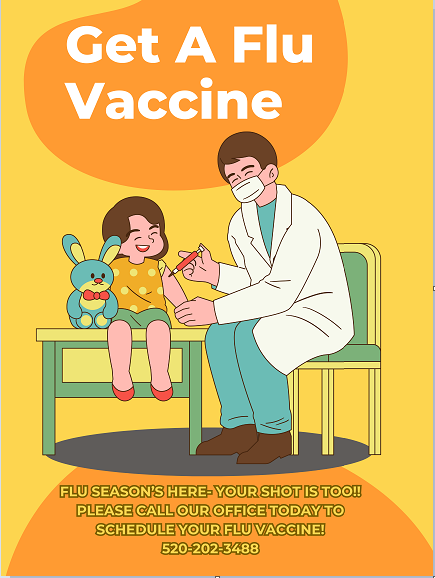 MENU
MENU
Dyson Medical | 2222 N. Craycroft Rd, Ste#150, Tucson, AZ 85712
Our walk in hours are
Monday – Thursday, 8:00am – 11:00am and 1:00pm – 4:00pm
| Resource | Helpful Materials | Description |
|---|---|---|
Autism Speakshttps://www.autismspeaks.org |
The nation’s largest autism science and advocacy organization; dedicated to funding research, increasing awareness of ASDs, and advocating for the needs of persons with autism and their families | Links to parent support groups, educational materials, videos
Free downloadable 100 Day Kit is the definitive resource for families of children with newly diagnosed ASD |
CDC – National Center on Birth Defects & Developmental Disabilitieshttps://www.cdc.gov/ncbddd/autism/ |
Aims to promote the health of children and adults and to enhance potential for full, productive living, through research, partnerships, prevention, and education | Learn the Signs, Act Act Early campaign to educate parents about child development and the early warning signs of ASDs and encourage developmental screening and inter-vention
Free resource kits for health care and child-care professionals |
Organization for Autism Research (OAR) |
Mission is to use applied science to answer questions that parents, families, persons with autism, teachers, and caregivers confront daily. | Online Publications: An Educator’s Guide to Autism for parents, teachers, and other professionals teaching a child with autism in the educational setting
Parent’s Guide to Assessment |
Autism Society of America |
The nation’s leading grassroots autism organization, with a strong chapter network that has spearheaded numerous pieces of state and local legislation, including the 2006 Combating Autism Act | Online quarterly journal Autism Advocate
Annual national conference on autism Links to local chapters for families are particularly helpful |
Future Horizons |
Aims to disseminate information about autism and Asperger syndrome through books and other media; has grown to be a world leader in publications and conferences on ASDs | Catalog of books, DVDs, and other materials for families, professionals, and children
Online magazine Autism-Asperger’s Digest features practical strategies for meeting the real-life challenges of ASD |
Wrightslaw |
Leading Web site for special education law and advocacy; publishes thousands of articles, cases, and free resources for parents, educators, advocates, and attorneys | Online articles to help families understand the special education process
Books, CDs/DVDs, digital media through Harbor House Law Press Yellow Pages for Kids provides contact information for local resources |
| Excerpt from September 2010 Consultant For Pediatricians | ||
The National Academies Presshttps://www.nap.edu/catalog/10017/educating-children-with-autism |
Publishes reports from national institutions, offers free online access as a PDF read-and-print publication | Educating Children with Autism- seminal publication outlines evidence-based educational interventions in children with ASDs and identifies characteristics of programs that work |
Research-based interventions for children with ASDs |
Applied Behavioral Analysis (ABA)A video describing ABA is available at To find board-certified behavior analyst in your area, |
Home/school programs |
Discrete Trial Training (DTT) |
Pivotal Response Training (PRT)For a training video on PRT, visit Please note: you will need to create a username and password to access the training materials |
Verbal Behavior (VB) ApproachFor an introduction to and more resources for VB, visit |
Developmental Individual Difference Relationship (DIR)/Floortime Model |
In-school programs |
Early Start Denver Model (ESDM)Information on this model is available at |
Social Communication, Emotional Regulation, and Transactional Supports(SCERTS)For a video describing this model, visit |
Training and Education of Autistic and Related Communication Handicapped Children (TEACCH)For a video describing this model, visit |
| ASDs, autism spectrum disorders. |
| Service | Description | Additional Information |
|---|---|---|
| Speech and language therapy | Depending on the verbal aptitude of the child, the goal might be mastery of spoken language, use of signs or gestures to communicate, or the pragmatic (social) use of language | To find a speech-language pathologist, contact the American Speech-Language-Hearing Association: https://www.asha.org/ |
| Augmentative Communication (AC) | Any tool, strategy, or technology that compensates for, enchances, expands, or helps develop expressive and receptive communication skills; these range from gestures and signing to communication boards, speech-generating devices, and exchange-based approaches (such as PECS) | For examples of AC devices, see the GoTalk Communication Device Series from Spectronics: https://www.spectronics.com.au/catalogue/gotalk-communication-device-series |
| Picture Exchange Communication Systems (PECS) | PECS allows children with little or no verbal ability to communicate using pictures; PECS starts by teaching the child how to exchange a picture for an object | For a video demonstrating PECS, go to https://www.youtube.com/user/pentaburks#p/search/0/eTzedhezar8 for a training module on PCS, go to https://autisminternetmodules.org/ |
| Occupational therapy (OT) | OT can provide strategies for learning key tasks that can be practiced at home, also address sensory defensiveness, which is common in children with an ASD | For a podcast on the role of OT in children with ASD, go to https://www.talkshoe.com/ |
| Social Stories | The goal of a Social Story is to share accurate social information in a patient and reassuring manner that is easily understood; it is usually written in the first person in short,direct statements that target a particular skill to be mastered | For a video describing Social Stories, go to: https://www.youtube.com/watch?v=VOHqcz9gZqk |
| Peer-Mediated Instruction (PMI) | PMI aims to increase the social engagement of children with an ASD through semi-structured interactions with typically developing peers | For a training module on PMI go to: https://autisminternetmodules.org/ |
| Video modeling (VM) | VM is used to teach desired behaviors in children with ASDs; either videotaped instruction of another person performing a desired behavior or videotaped models of the target child successfully performing desired behaviors (video self-modeling) | For more information on VM visit The National Professional Development Center on ASDs Web site: https://autismpdc.fpg.unc.edu |
| Title | Description | Link |
|---|---|---|
Autism linked to increased cerebrospinal fluid in infants |
A new study has uncovered a link between increased levels of cerebrospinal fluid in infants’ brains and a higher risk for developing autism spectrum disorder. | Link |
 X
X